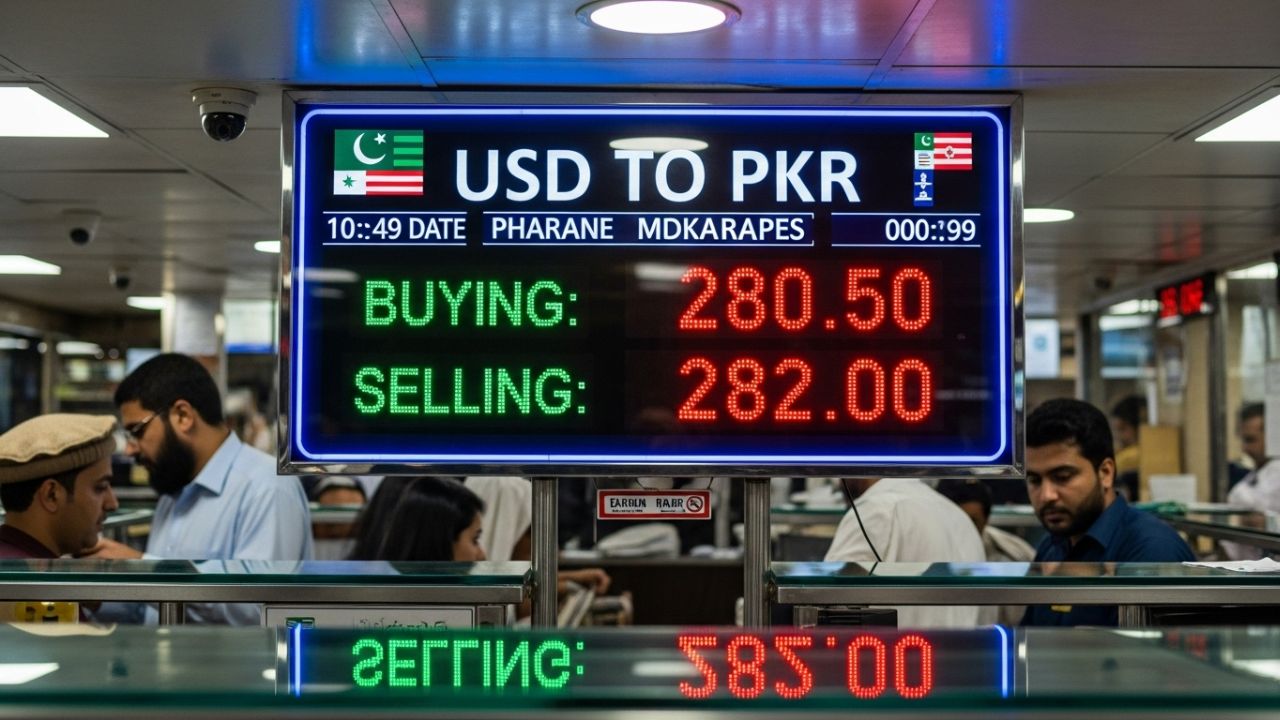Introduction to Currency Dynamics
People often search for the dollar rate in Pakistan to make smart financial choices. This rate shows how much one US dollar costs in Pakistani rupees. Traders monitor it closely every day. Additionally, investors use it for planning imports and exports. The rate changes due to various global and local events. Therefore, understanding it helps everyone from businesses to individuals.
Factors That Drive Changes
Several elements affect the exchange value between USD and PKR. First, inflation levels in Pakistan play a key role. High inflation weakens the rupee against the dollar. Moreover, political stability influences investor confidence directly. Stable governments attract foreign investments, which strengthen the local currency. However, economic policies from the State Bank of Pakistan also matter greatly. The bank adjusts interest rates to control the flow.
Global Economic Influences
International oil prices impact Pakistan’s economy heavily. Pakistan imports most of its oil needs. Thus, rising oil costs increase demand for dollars. Additionally, remittances from overseas Pakistanis support the rupee. Workers send billions home each year. Furthermore, trade balances with major partners like the US affect the rate. Exports to America bring in dollars, while imports drain them.
Local Market Forces
Domestic demand for foreign currency drives fluctuations too. Businesses need dollars for machinery imports. Tourists exchange money for travel expenses. However, black market activities sometimes distort official rates. Authorities crack down on illegal trading to maintain order. Moreover, stock market performance ties into currency strength. Strong markets draw investments, which bolster the rupee.
Historical Overview of Trends
The USD to PKR rate has evolved over decades. In the 1990s, it hovered around 30 rupees per dollar. Rapid growth pushed it higher in the 2000s. Additionally, the 2008 financial crisis hit Pakistan hard. The rate jumped to over 80 rupees. Furthermore, post-2010 reforms stabilized it temporarily. However, inflation surges in the 2020s caused more volatility.
Key Milestones in Recent Years
The COVID-19 pandemic disrupted global trade in 2020. Pakistan’s exports fell, weakening the rupee further. Thus, the rate reached 160 rupees by 2021. Moreover, IMF loans helped stabilize it around 170 in 2022. Political changes in 2023 added pressure again. However, economic recovery efforts lowered it slightly by 2024. As of 2025, it stands near 280 rupees.
Lessons from Past Fluctuations
Analysts study history to predict future moves. Strong reserves prevent sharp drops. Additionally, diversified exports reduce dependency on dollars. Governments learn from crises to build better policies. Therefore, citizens benefit from informed decisions based on trends.
Current Scenario and Forecasts
Today, the exchange rate reflects ongoing challenges. Experts predict mild fluctuations in the coming months. Inflation control measures show promise. Moreover, increased exports to Europe help balance trade. However, global tensions like wars affect oil supplies. Pakistan negotiates deals to secure stable prices.
Daily Monitoring Tips
Individuals check rates on official bank websites daily. Apps provide real-time updates for convenience. Additionally, news channels broadcast changes every hour. Traders use forex platforms for detailed charts. Furthermore, consult financial advisors for personalized insights.
Future Outlook
Economists forecast a steady rate if reforms continue. Investments in technology boost productivity. Thus, the rupee gains strength over time. However, external shocks remain a risk. Diversification strategies mitigate them effectively.
Economic Impacts on Pakistan
Currency shifts affect daily life profoundly. High rates increase import costs for goods. Businesses pass these to consumers. Additionally, fuel prices rise, impacting transportation. Farmers face higher fertilizer expenses. Moreover, debt repayments in dollars strain the budget.
Effects on Businesses and Individuals
Exporters benefit from a weaker rupee. Their products become cheaper abroad. Thus, they earn more in local currency. However, importers struggle with elevated costs. Families remit money to support relatives. Furthermore, tourists adjust budgets accordingly.
Broader Societal Consequences
Education abroad becomes pricier for students. Scholarships help offset some burdens. Additionally, healthcare imports drive up medicine prices. Governments subsidize essentials to ease pressures. Therefore, policies aim to protect vulnerable groups.
Strategies for Managing Currency Risks
People hedge against rate changes wisely. Banks offer forward contracts for businesses. Individuals save in dollar accounts. Moreover, diversify investments across currencies. However, stay informed through reliable sources. Experts recommend long-term planning over speculation.
Practical Advice for Citizens
Monitor economic news regularly. Use apps for alerts on shifts. Additionally, budget for potential increases. Consult professionals before major transactions. Furthermore, support local products to reduce import dependency.
Final Remarks
The dollar rate influences Pakistan’s economy deeply. Citizens adapt to its changes actively. Therefore, knowledge empowers better choices. Stay vigilant for a prosperous future.
